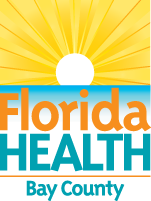It's a New Day in Public Health.
The Florida Department of Health works to protect, promote, and improve the health of all people in Florida through integrated state, county, and community efforts.
Importance of RIP Current Awareness
June 10, 2015
DEPARTMENT HIGHLIGHTS IMPORTANCE OF RIP CURRENT AWARENESS
~Learn how to spot a rip current and escape safely~
PANAMA CITY—We are one week from the official start of summer and the Florida Department of Health is promoting safe swimming while at the beach. The National Weather Service (NWS) recognizes this week, June 7–13, as Rip Current Preparedness Week—a great opportunity for all residents and visitors to become aware of the dangers of rip currents and how to protect yourself and others.
"Florida has more than 1,260 miles of beautiful coastline to enjoy—that's miles of opportunities to improve your health through swimming, snorkeling and diving,” said State Surgeon General and Secretary of Health Dr. John Armstrong. "I encourage all beach-goers to learn about swimming conditions before enjoying the water safely this summer.”
A rip current is defined as a relatively small-scale surf-zone current moving away from the beach. Rip currents form as waves disperse along the beach causing water to become trapped between the beach and a sandbar or other underwater feature.
"The safe enjoyment of Florida's beaches and coastal areas is a priority," says Kevin Claridge, director of the Florida Department of Environmental Protection's Florida Coastal Office. "To improve public safety, the Florida Coastal Management Program provides flags, signs and other rip current educational materials to make swimmers aware of water conditions.”
Look carefully for these signs before entering the ocean:
Change in water color from the surrounding water (either murkier from sediments, seaweed, and flotsam or darker because of the depth of the underwater channel where the rip flows);
A gap in the breaking waves, where the rip is forcing its way seaward through the surf zone;
Choppy surface that extends beyond the breaker zone;
Floating objects moving steadily seaward; and
Water in the rip may be colder than the surrounding water.
What to do if caught in a rip current:
Don't panic—this wastes energy and keeps you from thinking clearly;
Don't attempt to swim against the current directly back to shore;
Swim parallel to shore until you are out of the current;
Float calmly out with the rip current if you cannot break out by swimming perpendicular to the current. When it subsides, just beyond the surf zone, swim diagonally back to shore; and
Use periods of rest by floating as you attempt to work your way back to shore if you tire.
The NWS offers an online training on how to " break the grip of the rip” and spot rip currents before
entering the ocean. For more information about rip current safety click here.
###
The department works to protect, promote and improve the health of all people in Florida through
integrated state, county and community efforts.
Follow us on Twitter at @HealthyFla and on Facebook. For more information about the Florida
Department of Health please visit www.floridahealth.gov.
For Media Inquiries
@FLHealthEmerald
@HealthyFla





Connect with DOH